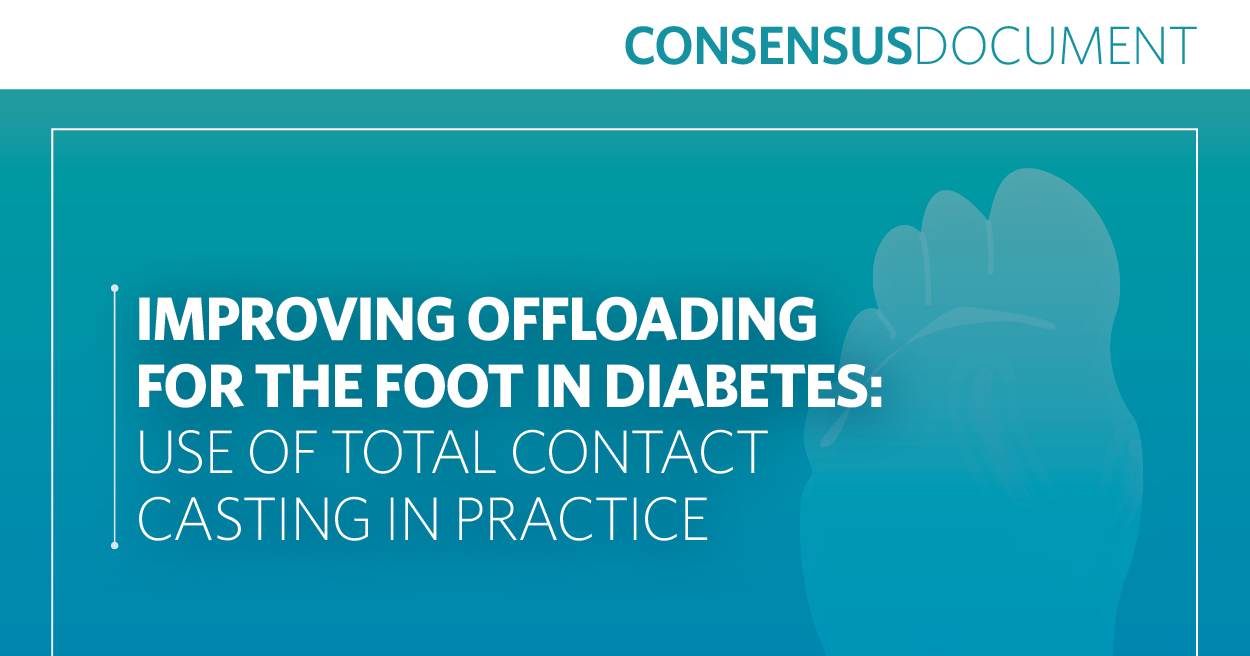Problems in balance control are a major cause of falls in older people, which can frequently result in fractures, especially in post-menopausal women with osteoporosis (Pfeifer et al, 2001). Among people aged 60 years and over, women with diabetes are 1.6 times more likely to have fallen in the previous year and twice as likely to have falls resulting in injuries compared to women without diabetes (Gregg et al, 2000).
Loss of sensation in the feet as a result of diabetic peripheral neuropathy (DPN) measured by a 10g monofilament test is associated with an increased risk of multiple falls (Wallace et al, 2002).
Aims
The aim of this study was to investigate postural stability in post-menopausal women with DPN using a foot-mat measurement system previously validated for use in assessing postural sway (Ducic et al, 2004). The authors hypothesised that women with diabetic peripheral neuropathy would demonstrate increased postural sway compared with controls of similar age who did not have diabetes. It was additionally proposed that the measures of postural instability would correlate with other markers of neuropathy such as vibration perception threshold (VPT).
Methods
Postural stability was assessed in women with type 2 diabetes aged >65 years who were randomly recruited from a community-based diabetes register. The authors identified 690 possible individuals, of whom 154 accepted and 7 were subsequently excluded due to other co-morbid conditions. The control group comprised 20 age-matched individuals who did not have diabetes or other co-morbid conditions affecting balance. The individuals were screened for loss of sensation over the first and fifth metatarsal heads and at the base of the hallux using a 10g monofilament test. When sensation was not detected at any site, the test was considered abnormal and patients proceeded to neuraesthesiometry.
Neuropathy was defined as a VPT greater than 25 volts in those with loss of 10g monofilament sensation. By this definition, 67 individuals were characterised as neuropathic. Table 1 shows the characteristics of the different groups. Individuals with visual impairment were excluded. Participants were asked to estimate the average number of hours they spent on their feet per day to provide information on physical activity (Norton et al, 2001). In addition, people were asked to recall the occurrence and frequency of falls in the last year.
Ethical approval for the study was granted by London Surrey Borders Local Ethics Committee.
Measurement system
Postural stability was measured using the MatScan Measurement System as previously described (Tekscan Inc., Boston, US; Ducic et al, 2004). Force transducers in the mat detect pressure changes under the foot and transmit this information to the computer in real time. The centre of force (COF) is projected onto the platform. The person stands barefoot on the mat as still as possible for one minute, focusing on an object to minimise head movements, maintaining their balance with their eyes open. The computer records 30 seconds of data and displays excursions of the COF as a criss-crossed blot pattern known as the COF centroid area or sway surface area (Figures 1 and 2).
The extent to which a subject moved while attempting to stand still with eyes open was assessed by the centroid area. Postural stability was further assessed by analysing maximum excursions of the COF in the anterior, posterior or lateral directions. Six individuals with severe DPN were excluded as the proved unable to maintain balance on the foot mat during measurements.
The position of the COF centroid area was recorded (see Figure 3 for a lateralised position). Asymmetric loading was deemed to be present when the position of the COF centroid area clearly deviated from the central position (Gillette et al, 2002).
Analysis
The authors compared foot mat parameters of postural stability (COF centroid area, maximum excursions of the COF in anterior, posterior and lateral directions) in the neuropathic and non-neuropathic groups by unpaired student’s t-tests without assuming equal variances (Table 2). A similar comparison was made between those with diabetes and the age-matched controls (Table 3). The comparison was repeated using log-transformed data to correct for unequal variation in the foot mat parameters measured. Means and standard error of means (SEM) were calculated. Pearson correlation was used to test the relation of COF centroid area to other variables (VPT, age, HbA1c, hours on feet, history of falls; Table 4). A comparison was made between the proportion of fallers and non-fallers in the neuropathic and non-neuropathic groups by Chi square test.
Results
Measures of postural stability
The mean ± SEM centroid area in the group with neuropathy was higher than in the non-neuropathic group (517 ± 33 mm2 versus 494 ± 39 mm2, respectively) but this did not achieve statistical significance (Table 2). However, when all women with diabetes – whether neuropathic or not – were considered, the mean centroid area was significantly higher than in the age-matched control group (506 ± 36 mm2 versus 359 ± 31 mm2, respectively; P<0.05) implying a greater degree of postural sway in those people with diabetes (Table 3).
Mean anterior and posterior or lateral motion of the COF was similar in all three groups (controls: 23.8 ± 1.8 mm2, 30.4 ± 1.3 mm2; people with diabetes but without neuropathy: 27.2 ± 1.4 mm2, 33.3 ± 1.3 mm2; people with diabetes and neuropathy: 28.3 ± 1.3 mm2, 35.7 ± 1.4 mm2; P=not significant). The position of the COF was usually central to provide optimal balance.
Asymmetric loading with lateralisation of the COF to one side was observed in 11 people with diabetes (10 without neuropathy, 1 with neuropathy) and only 1 control.
Correlations with VPT
A significant correlation was found between the centroid area and mean VPT (P=0.01) which became more pronounced when the centroid area was the log-transformed (P=0.002). A similar correlation was noted between VPT and lateral motion of COF (P=0.01) and AP motion (P=0.02).
Mean VPT correlated with age (P=0.006) but not with HbA1c. A negative correlation was found between mean VPT and mean number of hours spent on feet per day (P=0.045). Similarly, mean hours on feet was inversely correlated with centroid area (P=0.01).
History of falls
People were asked how often they had fallen in the last 12 months and were classified as either fallers (at least one fall) or non-fallers. In the control group, 9/20 (45%) had a history of at least one fall in the last 12 months compared with 58/147 (39.5%) in the group with diabetes (P >0.1 by Chi-square test). The proportion of fallers and non-fallers in the neuropathic group compared with those without neuropathy was also not statistically different (P >0.1 by Chi-square test). No significant correlation was found between any parameter of postural stability (COF centroid area, anterior, posterior or lateral motion) and the number of falls in the last 12 months.
When mean VPT in those who had fallen three or more times was compared with those who had not fallen at all in the last 12 months (22.7 ± 2.3 versus 18.4 ± 0.9 volts, respectively), the difference approached statistical significance (t-test;P=0.055).
Discussion
These results indicate that postural sway is increased in postmenopausal women with diabetes compared with controls of similar age. Although the degree of sway was larger in the subgroup with clinical neuropathy, this was not statistically significant. However, there was no significant correlation between a history of falls over the previous year and the degree of sway recorded.
Women with ages ranging from 68–101 years were studied and it is possible that inadequate recall in some participants may have resulted in underestimation of the number of falls. In addition, some of those who frequently fell and had severe neuropathy were excluded from the study because they were unable to stand still on the foot mat for the duration of the measurements and this may have caused a bias that prevented results reaching significance. Interestingly, a negative correlation was noted between average hours on feet and the degree of postural sway recorded, which might imply that people with the most postural instability try to reduce their risk of falls by spending less time on their feet.
Among all women with diabetes there was a direct correlation between the extent of postural sway and the severity of neuropathy as measured by the VPT. Previously, Ducic et al (2004) using the same pressure measurement system, showed that the degree of sway (by COF) was directly proportional to the severity of neuropathy (as assessed by 2-point touch thresholds). Similarly, Oppenheim et al (1999), using an interactive balance system, reported that sway intensity was increased in those with diabetes but without clinical neuropathy compared with controls. These results suggest that abnormalities in postural control can be detected in early neuropathy before responses to standard tests for neuropathy (such as VPT >25 volts) become abnormal.
Assessment of postural control using a quiet standing protocol on a force plate is a well-established method of quantifying standing balance (Panzer et al, 1995; Gillette et al, 2002). However, force platforms provide little information on how the plantar surface of the foot is loaded with respect to the supporting surface. The foot mat system has the advantage of being able to assess atypical patterns of loading. In both foot platform and foot mat systems, the excursion of the COF displayed as sway centroid surface area is easily accessible from the system.
Some investigators recommend evaluating each individual again with their eyes closed to intensify any postural instability (Katoulis et al, 1997). However, the authors feel that demonstrating increased postural sway despite visual clues is more clinically meaningful and implies a more severe deficit.
Weight distribution also contributes to stable posture and asymmetric loading would be expected to further exacerbate postural instability (Ahmed and Mackenzie, 2003). The authors have previously shown changes in pressure loading in people with diabetic neuropathy (Plank, 2000). In this study, the COF was observed to be in the central position in all but one control subject, while 11 of the people with diabetes demonstrated lateralisation of the COF.
Conclusion
Postural sway is increased in older women with diabetes and becomes more pronounced as the VPT rises. Abnormal sway and asymmetric loading can be detected even in people not conventionally classified as neuropathic. Prospective studies are needed to see if parameters of postural stability as detected in these measurement systems can be used to detect those at particular risk of falling and thereby be useful for targeted prevention strategies.





